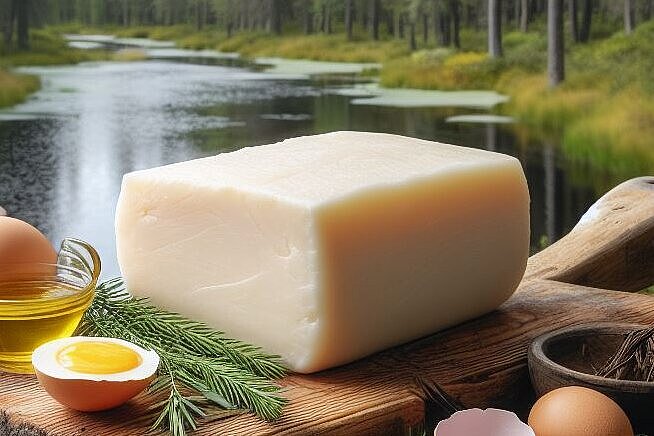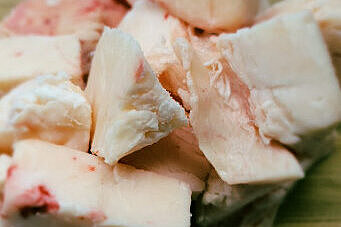Lamb fat

Benefits of lamb fat for dogs
Lamb fat can be beneficial for dogs in certain situations. For example:
- If the dog is very active and consumes a lot of energy, lamb fat can help to meet calorie requirements.
- If the dog is underweight or suffers from a lack of appetite, lamb fat can promote food intake and increase weight.
- If the dog is pregnant or lactating, lamb fat can support milk production and promote the development of the puppies.
- If the dog is recovering from illness or surgery, lamb fat can speed up recovery and strengthen the immune system.
Lamb fat is also a natural source of vitamins A, D and E, which are important for skin, coat and eye health. It also contains omega-3 fatty acids, which have an anti-inflammatory effect and can improve cardiovascular function.
Disadvantages of lamb fat for dogs
Lamb fat is not suitable for all dogs. There are also some disadvantages to be aware of. For example:
- If the dog is prone to obesity or suffers from diabetes or pancreatitis, lamb fat should be avoided as it can increase blood sugar and fat levels.
- If the dog has an allergy or intolerance to sheep meat or products, lamb fat should also not be fed as it can trigger allergic reactions.
- If the dog is prone to diarrhea or flatulence, lamb fat should only be given in small amounts, as it can put a strain on the digestive system.
Lamb fat should only ever be used as a supplement and not as the main ingredient in the diet. It should also always be stored fresh and cool to avoid spoilage.
How do you feed lamb fat to dogs?
Lamb fat is available to buy in various forms, for example as cubes, powder or oil. The dosage depends on the dog's weight, age and state of health. As a guideline: about 1 teaspoon per 10 kg body weight per day. The lamb fat should be mixed with the normal food or given as a treat.
Before feeding lamb fat to your dog, you should always consult a vet to rule out any possible risks or contraindications. You should also observe your dog's reaction to the lamb fat and stop feeding it if there are any signs of intolerance or side effects.
Lamb fat is an animal fat with a high energy content. It can be beneficial for dogs in certain situations, but it can also have disadvantages. Lamb fat should only ever be used as a supplement and not as the main ingredient in the diet.
If you notice any signs of hypersensitivity or poisoning in your dog, you should see your vet immediately. We are not a substitute for a vet, but we try to be as accurate as possible. Every dog reacts differently and we recommend you get a second opinion or consult your vet if in doubt.
Stay healthy and take good care of your four-legged friend!😊
Similar to Lamb fat
Duck fat has several benefits for dogs that can make it a good addition to their diet. For one, duck fat can promote skin and coat health as it supports the formation of skin cells and hair. In...
Chicken fat is an important source of energy for dogs. It provides more than twice as much energy as carbohydrates or protein. This is particularly beneficial for active dogs that need a lot of...
Horse fat is an animal fat that is obtained from the fatty tissue of horses. It has a high content of unsaturated fatty acids, especially omega-3 fatty acids. These are important for the health of...
Beef fat is the fatty tissue from cattle that is produced during slaughter. It contains mainly saturated fatty acids, which have a high energy density and can quickly give the dog strength and...



